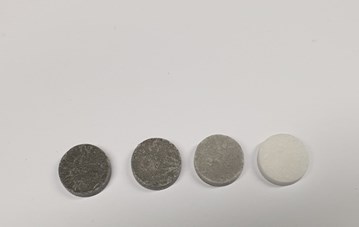Traceable energy content measurements (calorific value)
Moaaz Shehab and Kai Moshammer (PTB)
Usually, in the determination of the calorific value of biofuels, the samples tend to show large scattering in case of interlaboratory comparison between different institutes. This result scattering has an impact on both the biomass provider and the end-user since the final expanded uncertainty is around 5%. Therefore, there is a need to optimize the experimental practice and study the causes of the data scattering. In task 1.2 of BIOFMET an improved technical protocol was developed, where the causes of data scattering were mapped. Moreover, the protocol provides new criteria to overcome and neutralize the influence of these causes. Criteria such as equilibrium moisture content, pellet mass, handling and sampling techniques were highlighted. Furthermore, the influence of the ash content on the calorific value was investigated, which causes a linear decrease in the calorific value with the linear increase of the ash percentage present in the sample.

Figure 1. Calorific value of benzoic acid mixed with different concentrations of ash.

Figure 2. Benzoic acid samples with decreasing concentrations of ash (the last sample, the white one is pure benzoic acid).
